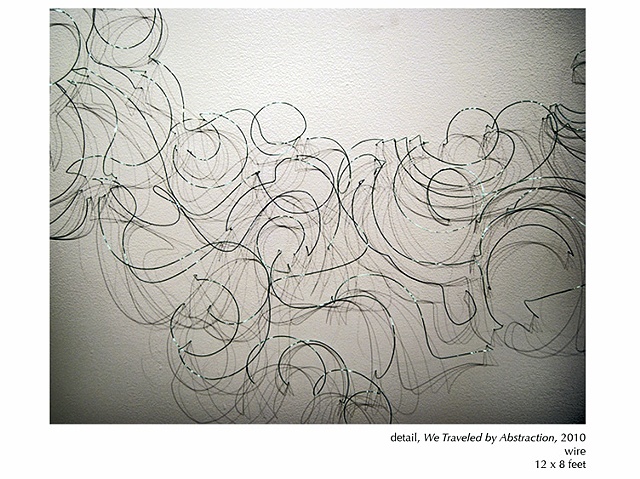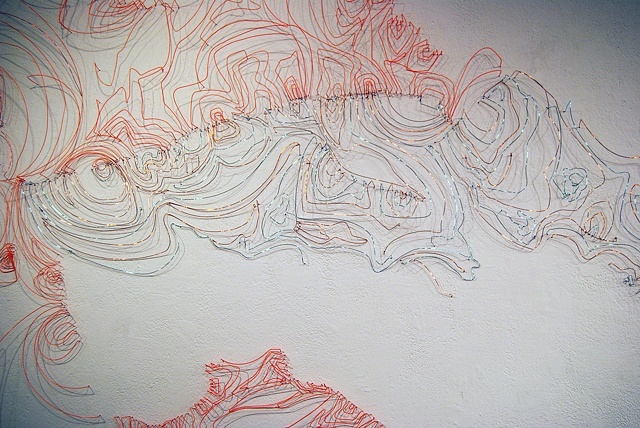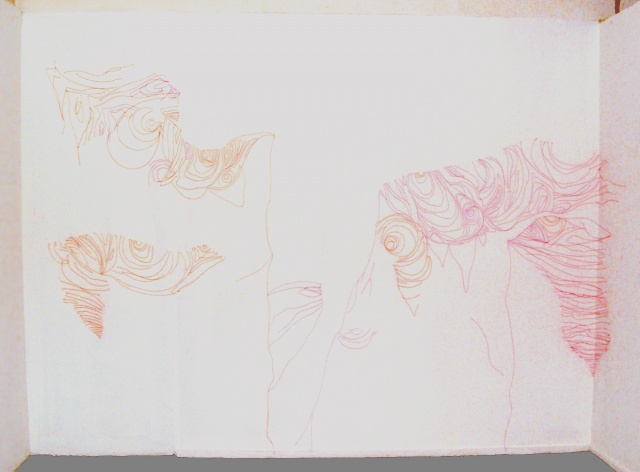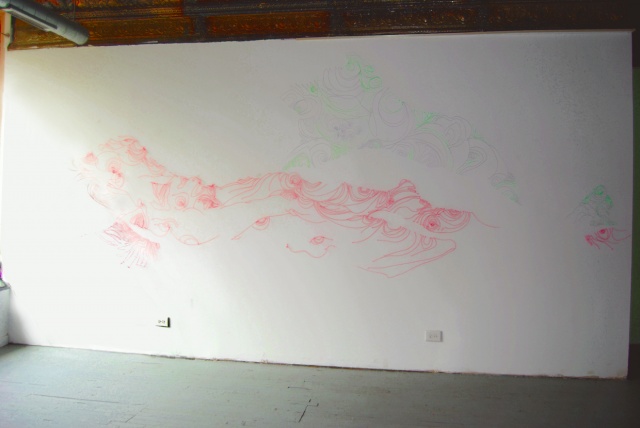Wire Wall Drawings
• Drawing in an expanded field (an excerpt from Jeremy Biles' catalog essay Permeations : Personal Geographies)
Maps can represent surfaces—of the earth, the body, a system—but Honchell recognizes that drawing a map is also the act of creating another surface, sometimes a double surface. She takes drawing off the paper and makes it hover over and against a wall, a surface upon a surface.
Engaging the specific properties wire—its linearity and pliability—Honchell treats drawing as a mode of sculpture and sewing in her work “The Myth of Solid Ground.” Mapping the zone between drawing, sculpture, and the processes of fiber art, she thus produces drawing in an expanded field. No longer simply a line traced on paper, her lines are molded in metal, with shaped wire plugged into the gallery wall like electrical conduits.
These gestures resemble hand processes found in fiber art: stitching, embellishing, sewing. Honchell thus draws by sculpting lines, and sculpts lines by sewing, with wire winding over and plunging into the wall’s surface. Strata accumulate and shapes take form, giving rise to an imagined landscape at once abstract and elemental, and doubled by its own filigreed shadows.
• Skin Effects
It is not only the physical but also the historical and metaphorical properties of wire that interest Honchell. In drawing, sculpting, and stitching with wire, the artist creates landscapes that re-present the origins of the wire itself: the earth, the mountains from which the wire was drawn.
Drawn wire thereby becomes drawing wire. While Honchell plays along the borders between sculpting and drawing through references to the origins of wire—emerging from the earth’s depths to be strung over its surface—she also refers back to the surface of the human body, its skin.
Wire, too, has skin. As an electrical conductor, wire displays “skin effects,” the tendency for electrical currents to course toward the surface of the conductor. At once recapitulating and playfully twisting and enlarging this physical quality for its metaphorical potential, Honchell endows wire with another skin effect: her landscape becomes personal, skin-like, resembling a giant fingerprint on the wall—public landscape permuting into the very emblem of identity.
–Jeremy Biles



